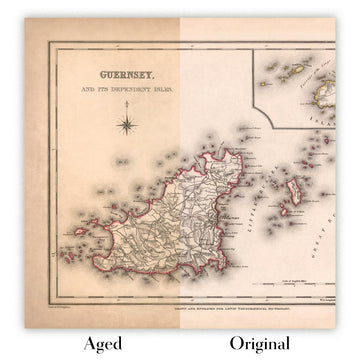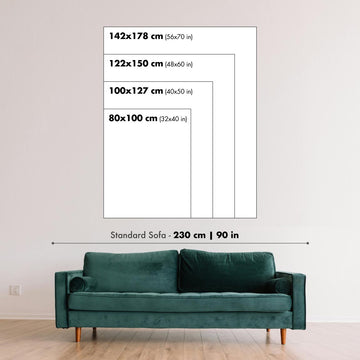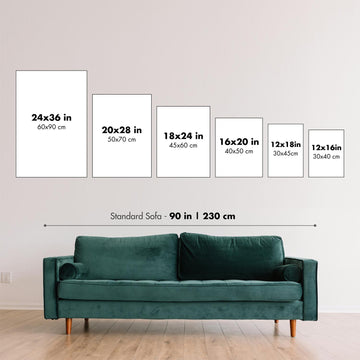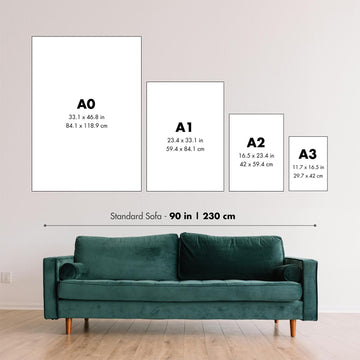

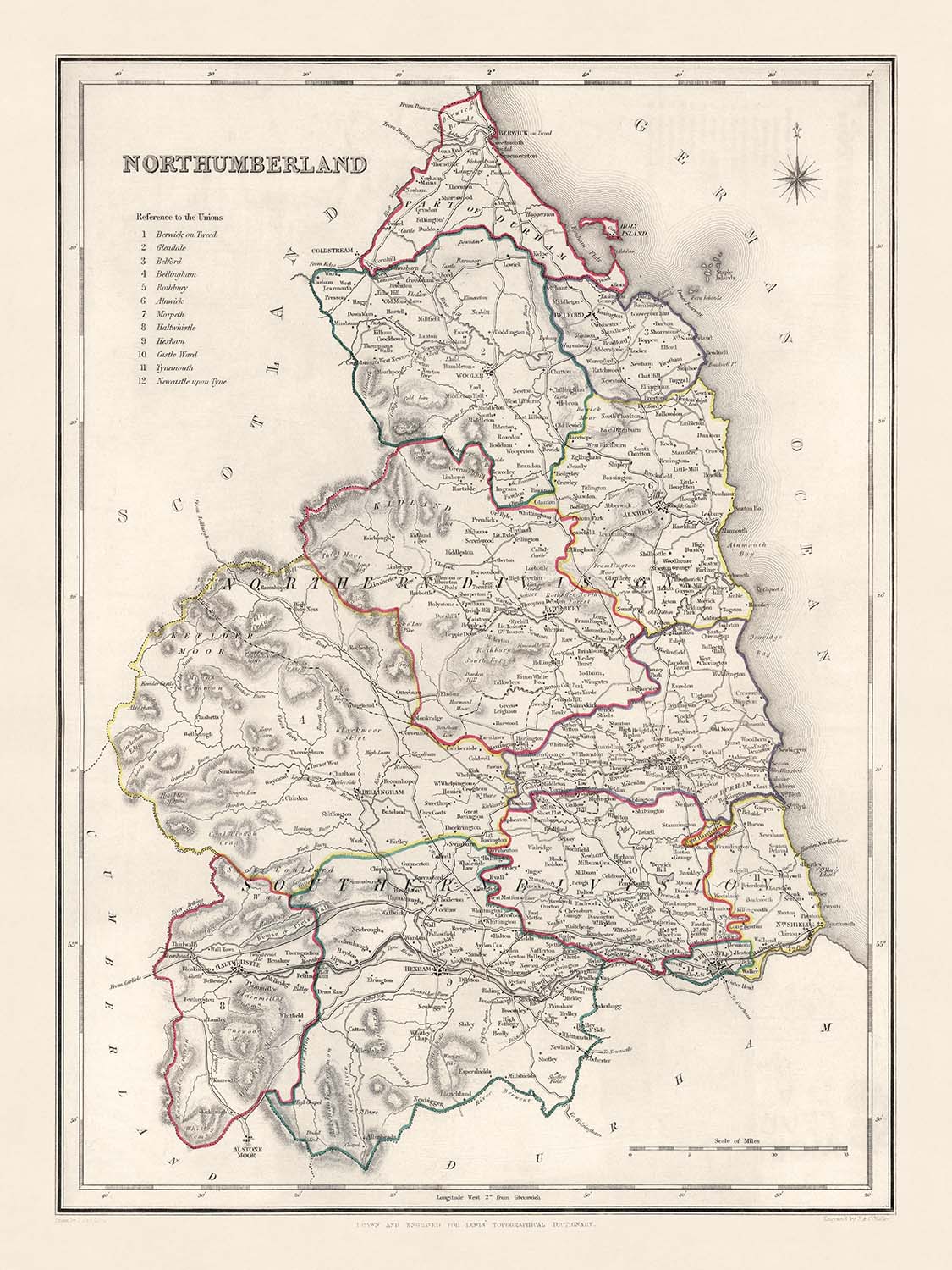

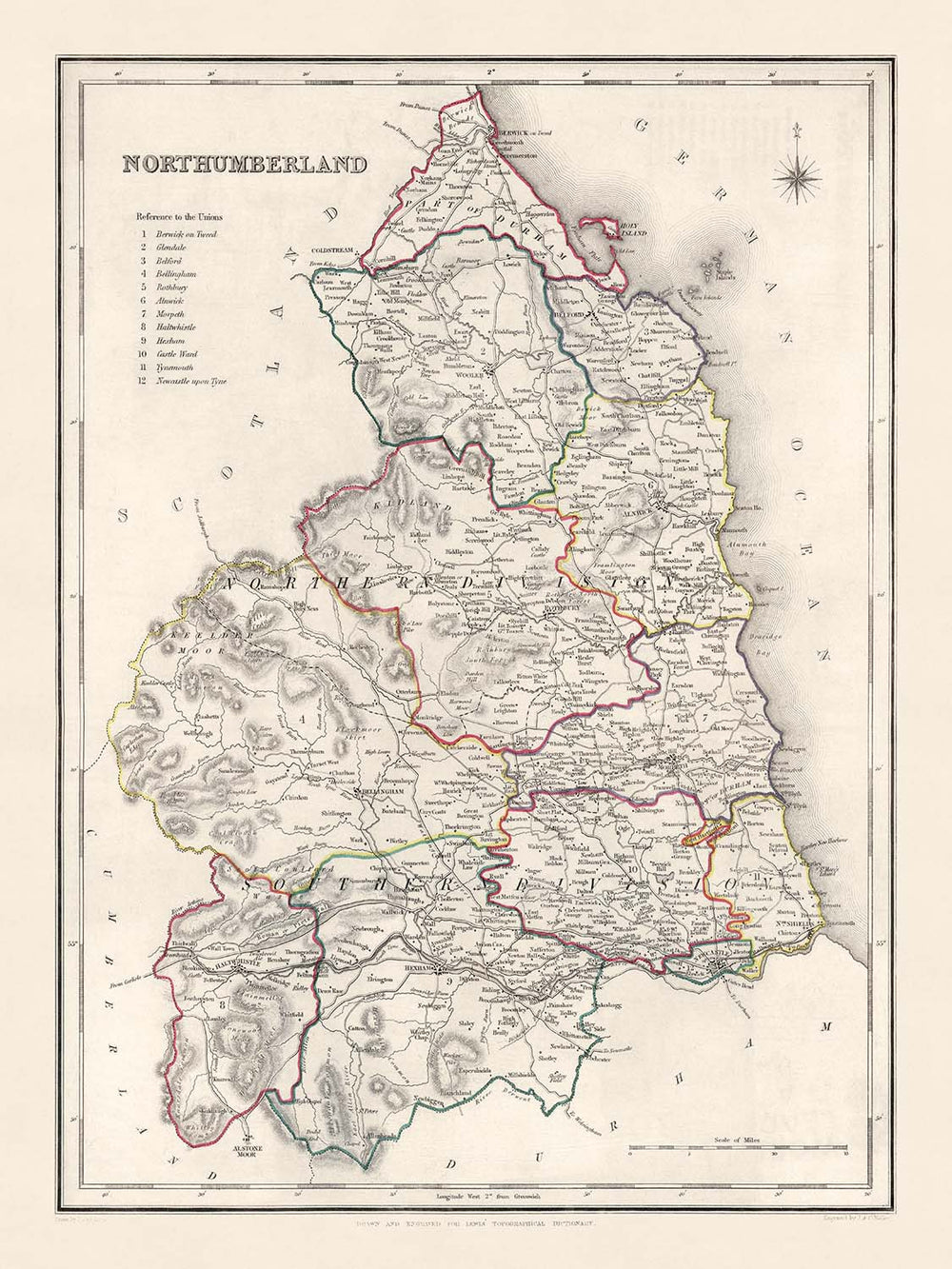

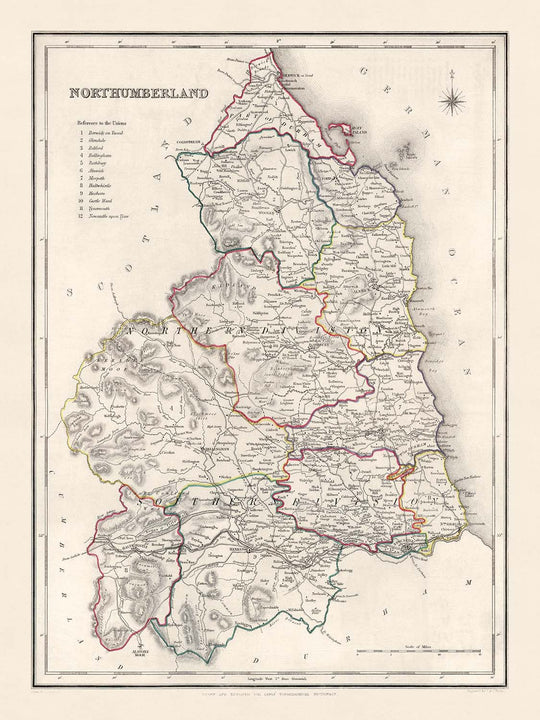







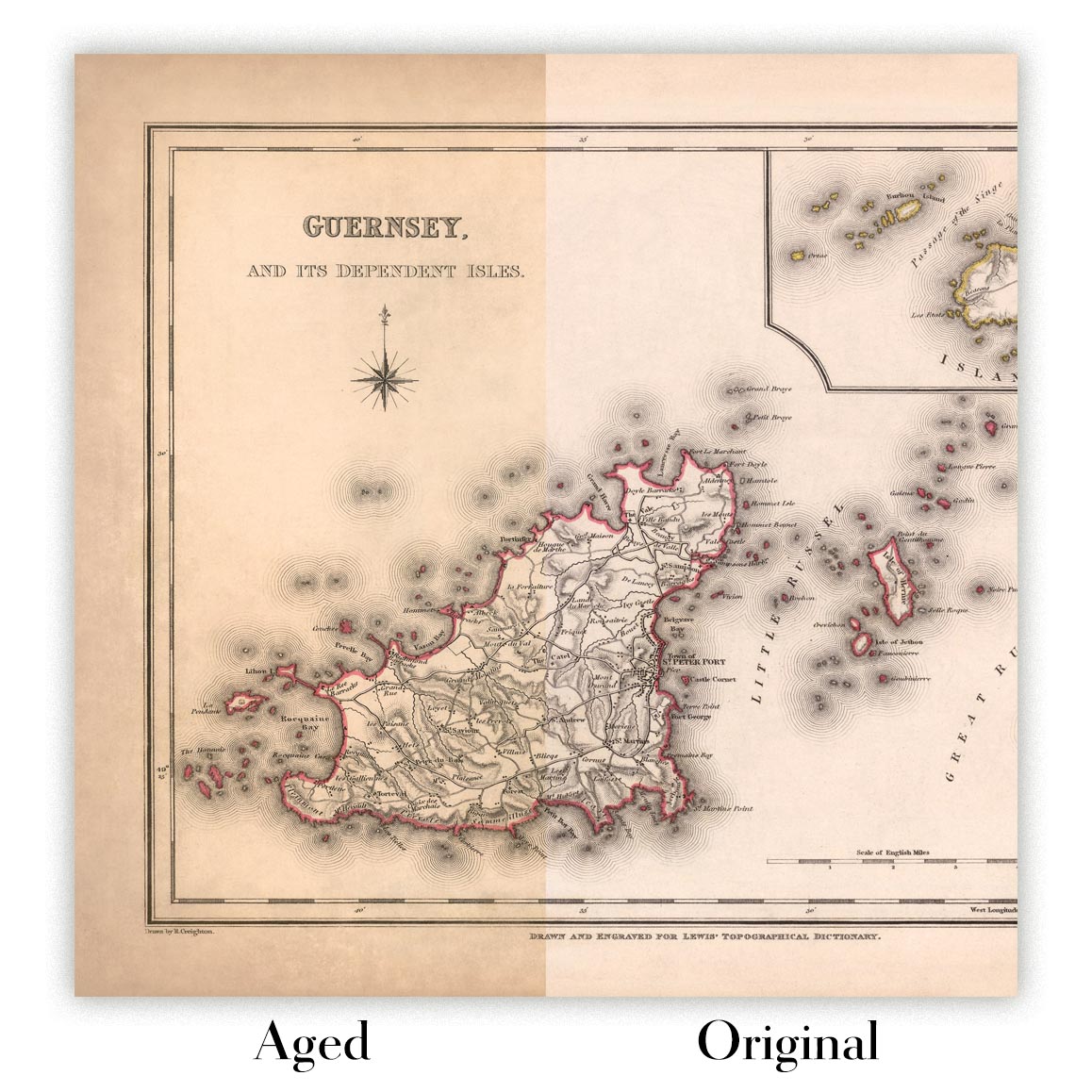



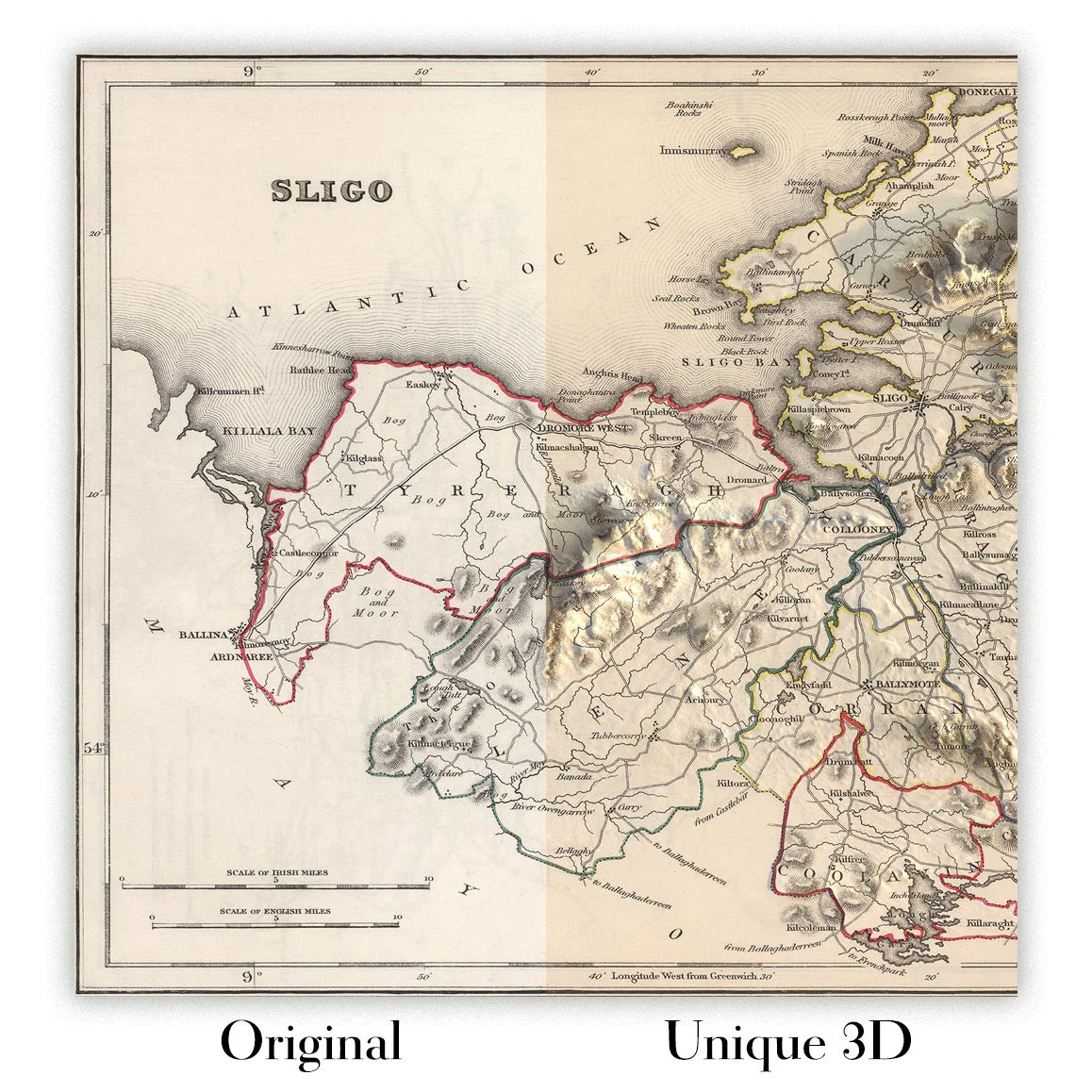
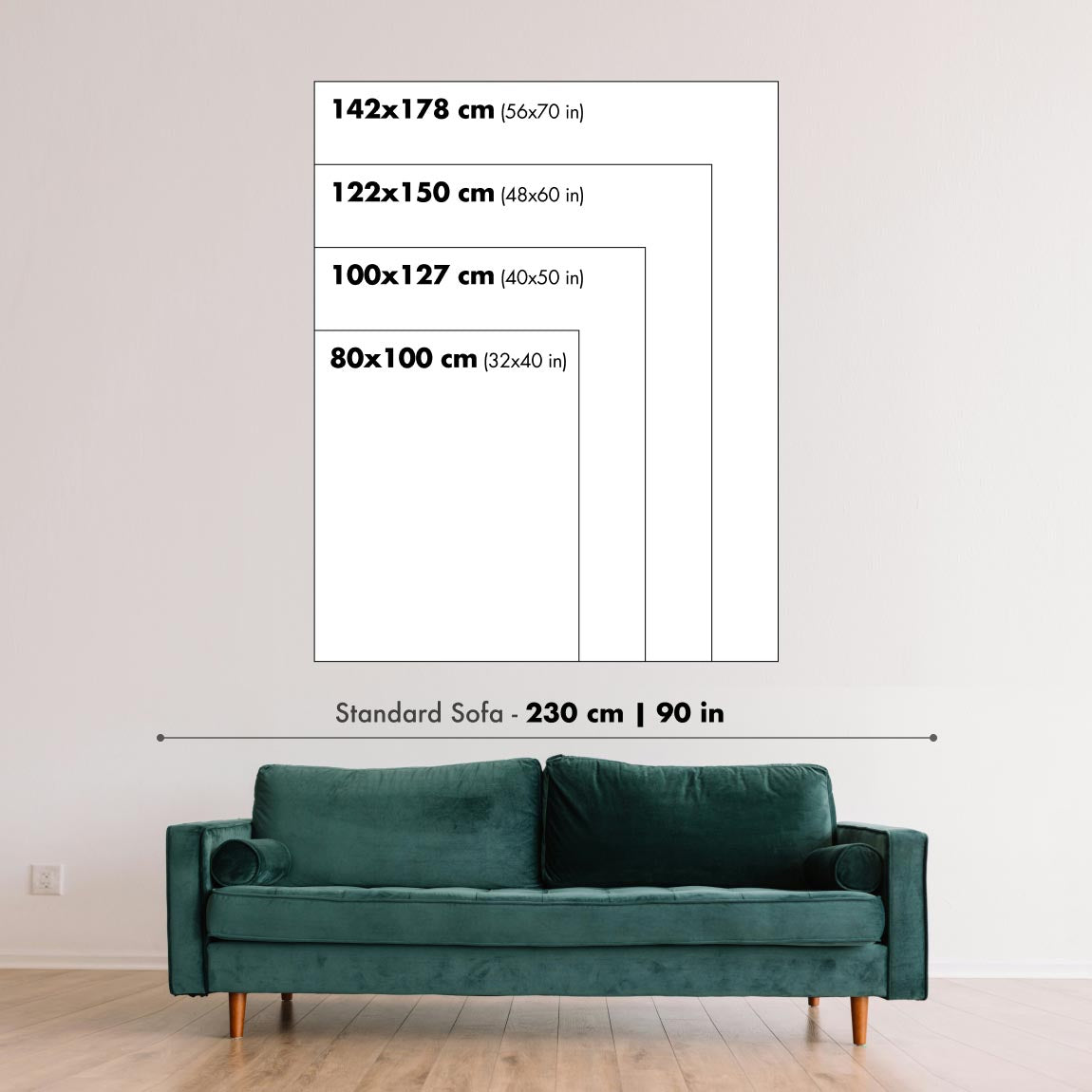
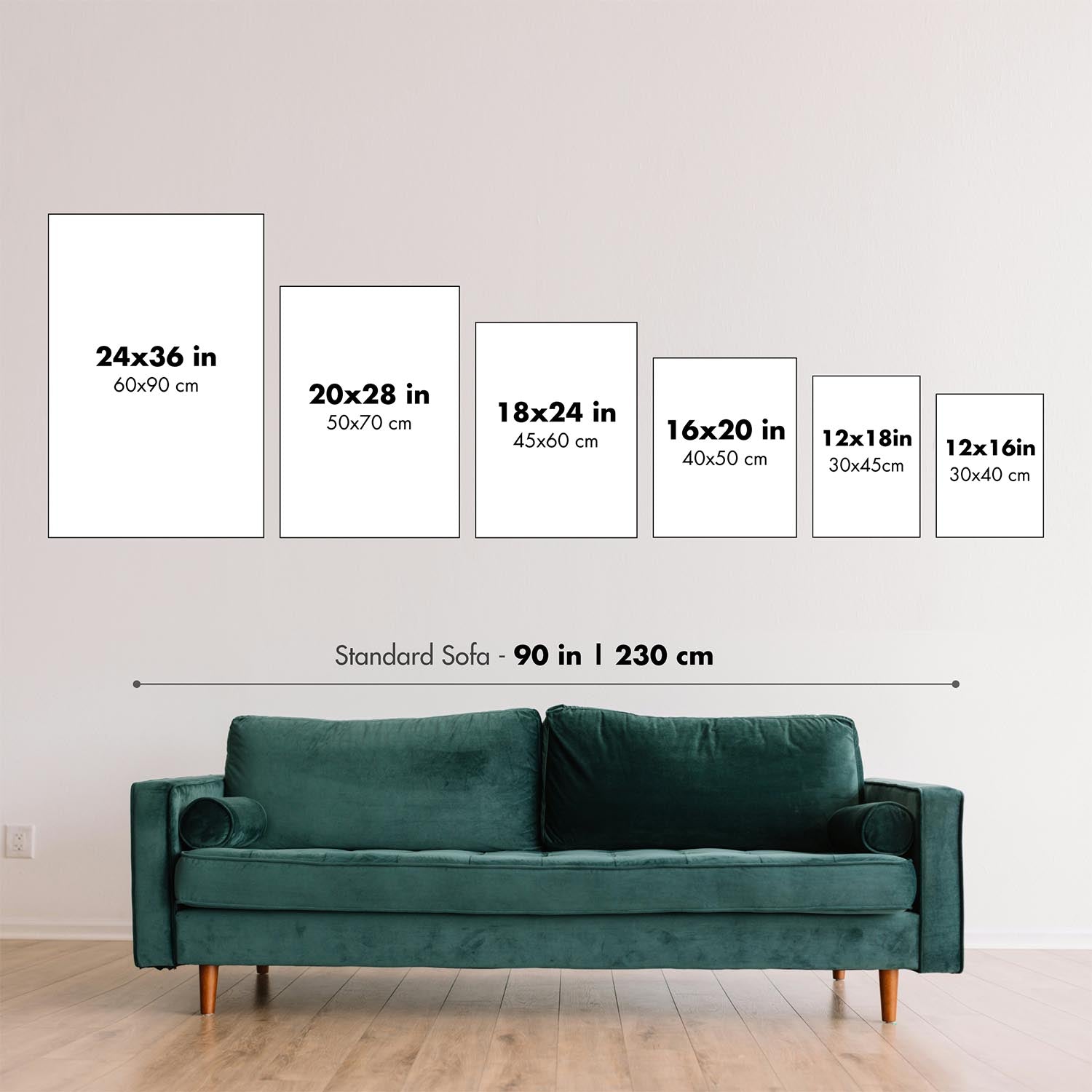
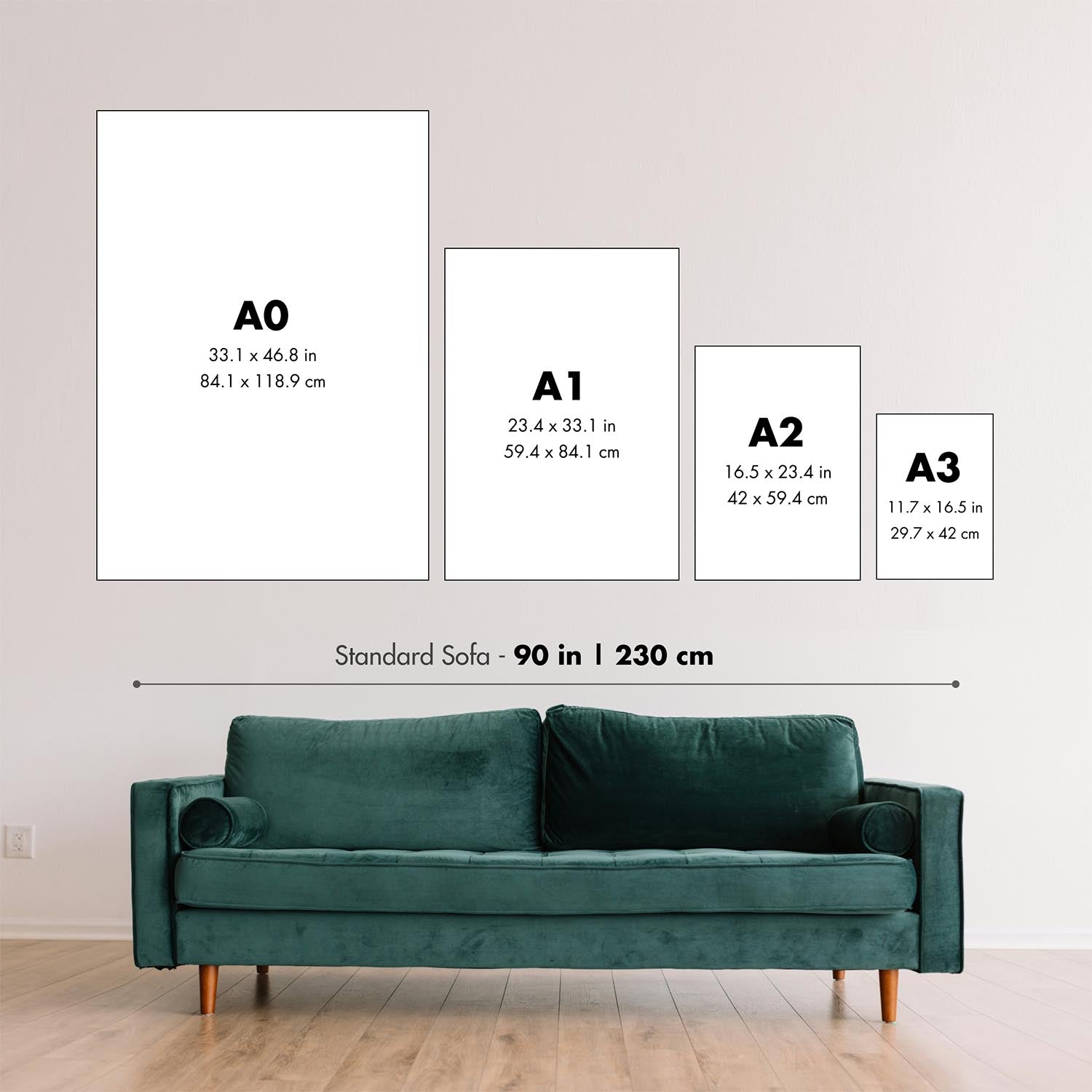
Old Map of Northumberland by Samuel Lewis, 1844: Newcastle upon Tyne, Blyth, Cramlington, Ashington, and Bedlington


-
![]() Handmade in Australia
Handmade in Australia
-
FREE worldwide delivery in 2-3 days ⓘ
Free Christmas delivery in 2-3 days
Your map should be delivered in 2-3 working days with free delivery, worldwide.
We make maps by hand locally in 23 countries, including Australia
![]() . If you're buying a gift for someone in another country, we will make the map locally to them.
. If you're buying a gift for someone in another country, we will make the map locally to them.You will never pay import tax or customs duty.
Check the Christmas delivery guide for order deadlines.
Express delivery is available at checkout which can reduce the delivery time to 1-2 days.
Please note that personalised maps, and larger framed maps, can take longer to produce and deliver.
If you need your order to arrive by a certain date, contact me and we can discuss your options.
-
90 day money back guarantee
ⓘ
90 days to return and refund
Products can be returned within 90 days for a full refund, or exchange for another product.
For personalised and custom made items, we may offer you store credit or a non-expiring gift card, as we cannot resell personalised orders.
If you have any questions, get in touch. For more information, see our full returns & exchanges policy.

My maps are rare, museum-grade, restored old maps sourced from libraries, auction houses and private collections across the globe.
Framing & free personalisation available
1. Select your size
➢ Pick the closest size (above)
➢ Provide the exact size in millimetres
➢ Add to bag and checkout as normal
2. Frame & personalise your map
Make your map unique with framing, hand-drawn customisation, vintage ageing, pop art text, unique 3D styling and moreGift message & custom finish

If you want to add a gift message, or a finish (jigsaw, aluminium board, etc.) that is not available here, please request it in the "order note" when you check out.
Every order is custom made, so if you need the size adjusted slightly, or printed on an unusual material, just let us know. We've done thousands of custom orders over the years, so there's (almost) nothing we can't manage.
You can also contact us before you order, if you prefer!

- Handmade locally. No import duty or tax
- FREE Delivery. Arrives in 2-3 days
- Love it or your money back
- Questions? WhatsApp me any time
Own a piece of history
5,000+ 5 star reviews


Delve into the past with this antique map of Northumberland, meticulously crafted by Samuel Lewis in 1844. Steeped in history, this piece offers an unparalleled look at the county during a time of significant social, economic, and geographic change. Embodying both the spirit of its era and the timeless beauty of cartography, the map stands as a testament to the rich history of Northumberland, a region marked by settlements that date back to the Roman era.
Given its age, the map features some settlements under earlier names, adding an extra layer of excitement for the keen historian. Some modern cities may not be present, reflecting the evolving landscape and the region's dynamic growth over time. With its crisp lines and intricate detailing, this 1844 map isn't just a snapshot of the past—it's a piece of art and a historical document combined.
Notable Settlements:
- Newcastle upon Tyne (1080): Established as a fort and bridge by the Romans and later turned into a major settlement by the Normans, today it's Northumberland's most populous city.
- Blyth (12th century): Originating as a port town, Blyth has evolved into a significant commercial hub known for its vibrant harbour.
- Cramlington (1135): Originally a small village with an agricultural economy, Cramlington is now a bustling town known for its industries.
- Ashington (1847): Known for its coal mining heritage, Ashington was referred to as "the world's largest coal-mining village."
- Bedlington (early 12th century): Noted for its ironworks and nail making industry in the 19th century, it was a significant industrial town.
- Berwick-upon-Tweed (c. 1018): The northernmost town in England, known for its turbulent history with alternating Scottish and English rule.
- Hexham (AD 674): Renowned for Hexham Abbey, it's one of the oldest surviving Christian foundations in Britain.
- Prudhoe (1150): Known for Prudhoe Castle, a fine example of a Norman fortification.
- Morpeth (1199): A historic market town, known for its unique blend of heritage and beauty.
- Amble (1200s): Once a major seaport, Amble is now a popular holiday town known for its marina and beautiful beaches.
- Alnwick (c. 600 AD): Famous for Alnwick Castle, a filming location for the Harry Potter series.
- Ponteland (13th century): Known for its beautiful rural landscapes and Ponteland Castle.
- Haltwhistle (1200s): Claimed to be the geographic center of Britain and is close to the Roman Hadrian's Wall.
- Bellingham (early 13th century): Gateway to the Northumberland National Park, it's known for its natural beauty.
- Wylam (12th century): Birthplace of George Stephenson, a pioneering railway engineer.
- Corbridge (AD 786): Known for its Roman archaeological site, the Corbridge Roman Town.
- Allendale Town (1700s): Celebrated for the Allendale Tar Bar'l, a unique New Year's Eve tradition.
- Seaton Delaval (11th century): Home to the architecturally impressive Seaton Delaval Hall.
- Alnmouth (1150): Known for its beautiful sandy beaches and vibrant harbour scene.
- Warkworth (8th century): A charming village dominated by the medieval Warkworth Castle.
- Rothbury (8th century): Known for its beautiful landscapes and as a gateway to Northumberland National Park.
- Bamburgh (c. 420): Known for the imposing Bamburgh Castle and beautiful beaches.
- Wooler (1100s): A picturesque market town, it's the gateway to the Cheviot Hills.
- Felton (12th century): Home to a thriving arts and crafts scene, located near the stunning Northumberland Coast Area of Outstanding Natural Beauty.
- Otterburn (1086): Known for the Battle of Otterburn that occurred in 1388.
- Longhoughton (1100s): Features beautiful coastlines and access to some of the best beaches in Northumberland.
- Elsdon (12th century): Home to a preserved medieval fortified vicarage and an 11th-century motte-and-bailey castle.
- Bardon Mill (1820s): Located close to Vindolanda, one of Europe's most important Roman archaeological sites.
- Heddon-on-the-Wall (early 13th century): Known for its section of the Roman Hadrian's Wall.
- Lynemouth (1800s): Once a coal mining village, it's now known for its power station.
Natural Attractions:
- Northumberland National Park: Offering some of the most pristine landscapes in the UK.
- Cheviot Hills: Rolling hills marking the border between England and Scotland.
- Hadrian's Wall: A UNESCO World Heritage Site, it's one of Britain's most significant remnants of the Roman period.
- Northumberland Coast AONB: Known for its outstanding natural beauty, featuring dunes, cliffs, and sandy beaches.
Historical Events (1800-1850):
- 1804-1806: The construction of the Union Chain Bridge, the first vehicular suspension bridge in the world.
- 1825: The opening of the Stanhope and Tyne Railroad, enhancing the coal transportation system.
- 1838: The establishment of the Newcastle and Carlisle Railway, promoting trade and travel.
- 1844: The year this map was created, marking a period of significant geographic change and development in Northumberland.
Please double check the images to make sure that a specific town or place is shown on this map. You can also get in touch and ask us to check the map for you.
This map looks great at all sizes: 8x10in (20.5x25.5cm), 12x16in (30.5x41cm), 18x24in (45.5x61cm), 16x20in (40.5x51cm), 24x36in (61x91.5cm), 30x40in (76x101.5cm) and 37x50in (94x127cm), but it looks even better when printed large.
I can create beautiful, large prints of this map up to 50in (127cm). Please get in touch if you're looking for larger, customised or different framing options.
The model in the listing images is holding the 18x24in (45.5x61cm) version of this map.
The fifth listing image shows an example of my map personalisation service.
If you’re looking for something slightly different, check out my main collection of UK and Ireland maps.
Please contact me to check if a certain location, landmark or feature is shown on this map.
This would make a wonderful birthday, Christmas, Father's Day, work leaving, anniversary or housewarming gift for someone from the areas covered by this map.
This map is available as a giclée print on acid free archival matte paper, or you can buy it framed. The frame is a nice, simple black frame that suits most aesthetics. Please get in touch if you'd like a different frame colour or material. My frames are glazed with super-clear museum-grade acrylic (perspex/acrylite), which is significantly less reflective than glass, safer, and will always arrive in perfect condition.
This map is also available as a float framed canvas, sometimes known as a shadow gap framed canvas or canvas floater. The map is printed on artist's cotton canvas and then stretched over a handmade box frame. We then "float" the canvas inside a wooden frame, which is available in a range of colours (black, dark brown, oak, antique gold and white). This is a wonderful way to present a map without glazing in front. See some examples of float framed canvas maps and explore the differences between my different finishes.
For something truly unique, this map is also available in "Unique 3D", our trademarked process that dramatically transforms the map so that it has a wonderful sense of depth. We combine the original map with detailed topography and elevation data, so that mountains and the terrain really "pop". For more info and examples of 3D maps, check my Unique 3D page.
For most orders, delivery time is about 3 working days. Personalised and customised products take longer, as I have to do the personalisation and send it to you for approval, which usually takes 1 or 2 days.
Please note that very large framed orders usually take longer to make and deliver.
If you need your order to arrive by a certain date, please contact me before you order so that we can find the best way of making sure you get your order in time.
I print and frame maps and artwork in 23 countries around the world. This means your order will be made locally, which cuts down on delivery time and ensures that it won't be damaged during delivery. You'll never pay customs or import duty, and we'll put less CO2 into the air.
All of my maps and art prints are well packaged and sent in a rugged tube if unframed, or surrounded by foam if framed.
I try to send out all orders within 1 or 2 days of receiving your order, though some products (like face masks, mugs and tote bags) can take longer to make.
If you select Express Delivery at checkout your order we will prioritise your order and send it out by 1-day courier (Fedex, DHL, UPS, Parcelforce).
Next Day delivery is also available in some countries (US, UK, Singapore, UAE) but please try to order early in the day so that we can get it sent out on time.
My standard frame is a gallery style black ash hardwood frame. It is simple and quite modern looking. My standard frame is around 20mm (0.8in) wide.
I use super-clear acrylic (perspex/acrylite) for the frame glass. It's lighter and safer than glass - and it looks better, as the reflectivity is lower.
Six standard frame colours are available for free (black, dark brown, dark grey, oak, white and antique gold). Custom framing and mounting/matting is available if you're looking for something else.
Most maps, art and illustrations are also available as a framed canvas. We use matte (not shiny) cotton canvas, stretch it over a sustainably sourced box wood frame, and then 'float' the piece within a wood frame. The end result is quite beautiful, and there's no glazing to get in the way.
All frames are provided "ready to hang", with either a string or brackets on the back. Very large frames will have heavy duty hanging plates and/or a mounting baton. If you have any questions, please get in touch.
See some examples of my framed maps and framed canvas maps.
Alternatively, I can also supply old maps and artwork on canvas, foam board, cotton rag and other materials.
If you want to frame your map or artwork yourself, please read my size guide first.
My maps are extremely high quality reproductions of original maps.
I source original, rare maps from libraries, auction houses and private collections around the world, restore them at my London workshop, and then use specialist giclée inks and printers to create beautiful maps that look even better than the original.
My maps are printed on acid-free archival matte (not glossy) paper that feels very high quality and almost like card. In technical terms the paper weight/thickness is 10mil/200gsm. It's perfect for framing.
I print with Epson ultrachrome giclée UV fade resistant pigment inks - some of the best inks you can find.
I can also make maps on canvas, cotton rag and other exotic materials.
Learn more about The Unique Maps Co.
Map personalisation
If you're looking for the perfect anniversary or housewarming gift, I can personalise your map to make it truly unique. For example, I can add a short message, or highlight an important location, or add your family's coat of arms.
The options are almost infinite. Please see my map personalisation page for some wonderful examples of what's possible.
To order a personalised map, select "personalise your map" before adding it to your basket.
Get in touch if you're looking for more complex customisations and personalisations.
Map ageing
I have been asked hundreds of times over the years by customers if they could buy a map that looks even older.
Well, now you can, by selecting Aged before you add a map to your basket.
All the product photos you see on this page show the map in its Original form. This is what the map looks like today.
If you select Aged, I will age your map by hand, using a special and unique process developed through years of studying old maps, talking to researchers to understand the chemistry of aging paper, and of course... lots of practice!
If you're unsure, stick to the Original colour of the map. If you want something a bit darker and older looking, go for Aged.
If you are not happy with your order for any reason, contact me and I'll get it fixed ASAP, free of charge. Please see my returns and refund policy for more information.
I am very confident you will like your restored map or art print. I have been doing this since 1984. I'm a 5-star Etsy seller. I have sold tens of thousands of maps and art prints and have over 5,000 real 5-star reviews. My work has been featured in interior design magazines, on the BBC, and on the walls of dozens of 5-star hotels.
I use a unique process to restore maps and artwork that is massively time consuming and labour intensive. Hunting down the original maps and illustrations can take months. I use state of the art and eye-wateringly expensive technology to scan and restore them. As a result, I guarantee my maps and art prints are a cut above the rest. I stand by my products and will always make sure you're 100% happy with what you receive.
Almost all of my maps and art prints look amazing at large sizes (200cm, 6.5ft+) and I can frame and deliver them to you as well, via special oversized courier. Contact me to discuss your specific needs.
Or try searching for something!
This service is currently unavailable,
sorry for the inconvenience.
Pair it with a frame
Frame options are for visualization purposes only.
FRAME STYLE
MATTING SIZE
BUILDING YOUR EXPERIENCE
powered by Blankwall
Take a few steps back and let your camera see more of the scene.
powered by Blankwall
Was this experience helpful?
Delve into the past with this antique map of Northumberland, meticulously crafted by Samuel Lewis in 1844. Steeped in history, this piece offers an unparalleled look at the county during a time of significant social, economic, and geographic change. Embodying both the spirit of its era and the timeless beauty of cartography, the map stands as a testament to the rich history of Northumberland, a region marked by settlements that date back to the Roman era.
Given its age, the map features some settlements under earlier names, adding an extra layer of excitement for the keen historian. Some modern cities may not be present, reflecting the evolving landscape and the region's dynamic growth over time. With its crisp lines and intricate detailing, this 1844 map isn't just a snapshot of the past—it's a piece of art and a historical document combined.
Notable Settlements:
- Newcastle upon Tyne (1080): Established as a fort and bridge by the Romans and later turned into a major settlement by the Normans, today it's Northumberland's most populous city.
- Blyth (12th century): Originating as a port town, Blyth has evolved into a significant commercial hub known for its vibrant harbour.
- Cramlington (1135): Originally a small village with an agricultural economy, Cramlington is now a bustling town known for its industries.
- Ashington (1847): Known for its coal mining heritage, Ashington was referred to as "the world's largest coal-mining village."
- Bedlington (early 12th century): Noted for its ironworks and nail making industry in the 19th century, it was a significant industrial town.
- Berwick-upon-Tweed (c. 1018): The northernmost town in England, known for its turbulent history with alternating Scottish and English rule.
- Hexham (AD 674): Renowned for Hexham Abbey, it's one of the oldest surviving Christian foundations in Britain.
- Prudhoe (1150): Known for Prudhoe Castle, a fine example of a Norman fortification.
- Morpeth (1199): A historic market town, known for its unique blend of heritage and beauty.
- Amble (1200s): Once a major seaport, Amble is now a popular holiday town known for its marina and beautiful beaches.
- Alnwick (c. 600 AD): Famous for Alnwick Castle, a filming location for the Harry Potter series.
- Ponteland (13th century): Known for its beautiful rural landscapes and Ponteland Castle.
- Haltwhistle (1200s): Claimed to be the geographic center of Britain and is close to the Roman Hadrian's Wall.
- Bellingham (early 13th century): Gateway to the Northumberland National Park, it's known for its natural beauty.
- Wylam (12th century): Birthplace of George Stephenson, a pioneering railway engineer.
- Corbridge (AD 786): Known for its Roman archaeological site, the Corbridge Roman Town.
- Allendale Town (1700s): Celebrated for the Allendale Tar Bar'l, a unique New Year's Eve tradition.
- Seaton Delaval (11th century): Home to the architecturally impressive Seaton Delaval Hall.
- Alnmouth (1150): Known for its beautiful sandy beaches and vibrant harbour scene.
- Warkworth (8th century): A charming village dominated by the medieval Warkworth Castle.
- Rothbury (8th century): Known for its beautiful landscapes and as a gateway to Northumberland National Park.
- Bamburgh (c. 420): Known for the imposing Bamburgh Castle and beautiful beaches.
- Wooler (1100s): A picturesque market town, it's the gateway to the Cheviot Hills.
- Felton (12th century): Home to a thriving arts and crafts scene, located near the stunning Northumberland Coast Area of Outstanding Natural Beauty.
- Otterburn (1086): Known for the Battle of Otterburn that occurred in 1388.
- Longhoughton (1100s): Features beautiful coastlines and access to some of the best beaches in Northumberland.
- Elsdon (12th century): Home to a preserved medieval fortified vicarage and an 11th-century motte-and-bailey castle.
- Bardon Mill (1820s): Located close to Vindolanda, one of Europe's most important Roman archaeological sites.
- Heddon-on-the-Wall (early 13th century): Known for its section of the Roman Hadrian's Wall.
- Lynemouth (1800s): Once a coal mining village, it's now known for its power station.
Natural Attractions:
- Northumberland National Park: Offering some of the most pristine landscapes in the UK.
- Cheviot Hills: Rolling hills marking the border between England and Scotland.
- Hadrian's Wall: A UNESCO World Heritage Site, it's one of Britain's most significant remnants of the Roman period.
- Northumberland Coast AONB: Known for its outstanding natural beauty, featuring dunes, cliffs, and sandy beaches.
Historical Events (1800-1850):
- 1804-1806: The construction of the Union Chain Bridge, the first vehicular suspension bridge in the world.
- 1825: The opening of the Stanhope and Tyne Railroad, enhancing the coal transportation system.
- 1838: The establishment of the Newcastle and Carlisle Railway, promoting trade and travel.
- 1844: The year this map was created, marking a period of significant geographic change and development in Northumberland.
Please double check the images to make sure that a specific town or place is shown on this map. You can also get in touch and ask us to check the map for you.
This map looks great at all sizes: 8x10in (20.5x25.5cm), 12x16in (30.5x41cm), 18x24in (45.5x61cm), 16x20in (40.5x51cm), 24x36in (61x91.5cm), 30x40in (76x101.5cm) and 37x50in (94x127cm), but it looks even better when printed large.
I can create beautiful, large prints of this map up to 50in (127cm). Please get in touch if you're looking for larger, customised or different framing options.
The model in the listing images is holding the 18x24in (45.5x61cm) version of this map.
The fifth listing image shows an example of my map personalisation service.
If you’re looking for something slightly different, check out my main collection of UK and Ireland maps.
Please contact me to check if a certain location, landmark or feature is shown on this map.
This would make a wonderful birthday, Christmas, Father's Day, work leaving, anniversary or housewarming gift for someone from the areas covered by this map.
This map is available as a giclée print on acid free archival matte paper, or you can buy it framed. The frame is a nice, simple black frame that suits most aesthetics. Please get in touch if you'd like a different frame colour or material. My frames are glazed with super-clear museum-grade acrylic (perspex/acrylite), which is significantly less reflective than glass, safer, and will always arrive in perfect condition.








